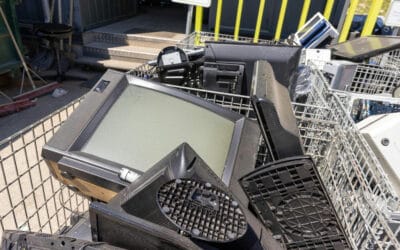You naturally want to have more control over all of your assets. Unfortunately, you may currently be using archaic ways and means to do this. The use of spreadsheets and lists used to be the ideal way to go about tracking your assets. However, there are now better and more reliable asset tracking solutions out there. This is why it’s important that you make the switch. However, it’s not always clear why and even how the switch must be made. Don’t worry, this article will explain everything so that you too begin to benefit from using tracking software.
What Tracking Software Does
Tracking software does exactly what it suggests it does, it tracks assets easily. However, there is a lot more to this type of software than meets the eye. Modern asset tracking solutions are capable of offering a lot of different features to users. Some of these features include the ability to create historical data, aid in asset maintenance, eliminate ghost assets, and so much more.
Ostensibly, tracking software is here to make your life much easier. Regardless of the industry you work in or even how long you have been operating, the right software can potentially help your business to grow and blossom. Thanks to the way that the software works, you can place your trust in the software and allow it to complete a range of activities while you complete other tasks.
How Tracking Software Works
As soon as you sign up to use asset tracking solutions you can begin tracking everything. All that you have to do is place an RFID tag or barcode on your assets. This is because the tag or barcode helps to track your assets.
As soon as the tag or barcode is attached, scan it to create a profile. Each asset will have an individual profile to which you can add a lot of information. In fact, the more information you add, the better. You could, for example, add warranty and insurance information so it can easily be accessed at a later date.
Whenever your assets are used data will automatically be collected. This data can ultimately show you how your assets are performing. You can see how they’re being used or even how many you have in stock.
What Can You Track?
When it comes to tracking your assets you’ll be pleased to know that most asset tracking solutions let you track anything. As long as you have already placed an RFID tag or a barcode on the asset you want to track, you can track it. This means that you can potentially track:
- Tools and equipment
- Computers, tablets, and laptops
- Furniture and plants
- Works of art
- Stationery and other office supplies
- Cars, vans, and lorries
- Buildings/facilities
- And everything in between
One of the best things about using tracking software is that you can track just about anything. No matter what type of business you run or where you are in the world, you can track your assets. Assets have also been tracked in space which just goes to show there are no limits.
How To Start Tracking Your Assets
To begin tracking your assets you need to decide where to start. It’s a good idea to start with one room at a time or one area of your factory/warehouse, etc. at a time. When you work this way you’ll have a better idea of the assets you’ve already started tracking.
Take the tag or barcode supplied by your asset tracking solutions provider and attach it to an asset. Scan the tag or barcode to create a digital profile. Add relevant information to the profile and you’re on your way. Repeat this process until you’re tracking every asset you wish to track.
How Tracking Software Keeps Your Assets In Good Condition
Did you know that your software can keep your assets in good condition so they last longer? Setting a maintenance reminder for your assets ensures they are looked after. Consequently, you may have to pay less to replace damaged assets, resulting in your business saving money.
Make The Switch Today
Make the switch today so that you can reap all of the rewards that come with your chosen asset tracking software. When you can track your assets easily you can also have more control over them. Depending on the software you choose, you may also be able to automate a lot of procedures such as invoicing and stock counts. This means that you can get on with other tasks ensuring that your business is run smoothly. This is why you should make the switch today, it just makes sense.
Wish to chat with an expert about using asset tracking solutions to help your business? Contact us today at team@itemit.com.
The Ultimate Asset Tracking Solution
Choose a better way to track your assets
Start your free 14-day trial now
Instant access. No credit card details required.
Related articles
What Are The Four Phases Of The Equipment Life Cycle?
There are four phases of an equipment life cycle, but it’s not clear what they are or why equipment tracking can improve the life cycle. Read this article to find out!
What Is Asset Identification? A Guide to Tracking Your Assets
Learn about asset identification and how it streamlines asset tracking, improves inventory management, and ensures operational efficiency. Read more in our blog.
Implementing An Effective Equipment Replacement Plan
Need to replace equipment after using pre-emptive maintenance? implementing an equipment replacement plan helps. Read this article to find out how to make a plan!



